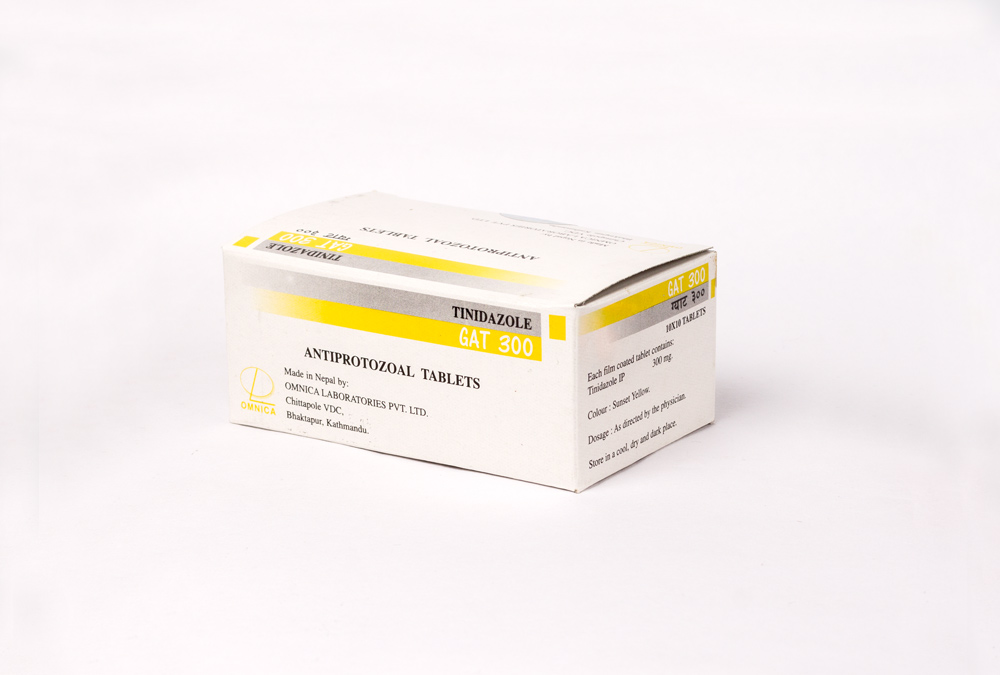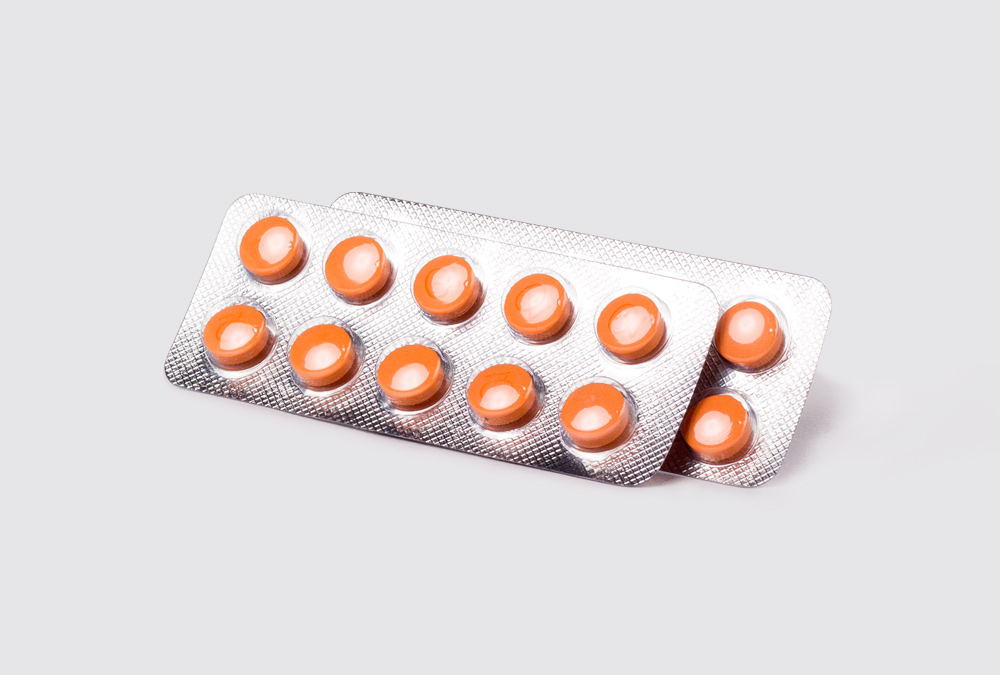Brand Name : GAT
Generic Name : Tinidazole
Preparations : 300 mg / 500 mg / 1000 mg Tablets
Pharmacological Categories : Antiprotozoal, Antibacterial
Mechanism of Action (MOA)
GAT (Tinidazole) is a prodrug. The nitro group of GAT is reduced in protozoa forming free nitro radical, which covalently binds to protozoal DNA. This leads to DNA damage and then cell death.
Pharmacokinetics
- Absorption : Rapidly and almost completely absorbed from the gastrointestinal tract
- Peak Plasma Concentration : 2 hours
- Distribution : Widely distributed in bile, breast milk, cerebrospinal fluid, saliva, variety of body tissues
- Protein Binding : 12%
- Metabolism : Liver
- Elimination Half-life : 12 to 14 hours
- Excretion : Urine (unchanged and metabolites), faeces (lesser extent)
Indications and Dosage
- Intestinal Amoebiasis : Two tablets of GAT 1000 mg as a single daily dose for 2 or 3 days
- Hepatic Amoebiasis : Three to four tablets of GAT 500 mg as a single daily dose for 3 days or occasionally up to 6 days
- Giardiasis : Two tablets of GAT 1000 mg single dose
- Trichomoniasis : Two tablets of GAT 1000 mg single dose (both sexual partners)
- Acute Necrotizing Ulcerative Gingivitis : Two tablets of GAT 1000 mg single dose
- Bacterial Vaginosis : Two tablets of GAT 1000 mg single dose; higher cure rates achieved with two tablets of GAT 1000 mg daily dose on 2 successive days or one tablet of GAT 1000 mg daily for 5 days
- Anaerobic Bacterial Infections : Initially two tablets of GAT 1000 mg followed by one tablet of GAT 1000 mg daily or one tablet of GAT 500 mg twice daily for total 5 or 6 days
- Prevention of Post-operative Anaerobic Bacterial Infections : Two tablets of GAT 1000 mg about 12 hours before surgery
- Eradication of H. pylori in Peptic Ulcer Disease : One tablet of GAT 500 mg twice daily with clarithromycin and omeprazole for 7 days
Side Effects
COMMON : Nausea, unpleasant metallic taste, vomiting, diarrhoea, constipation, furred tongue, glossitis, stomatitis
RARELY REPORTED : Antibiotic associated colitis, weakness, dizziness, ataxia, headache, drowsiness, insomnia, depression or confusion, erythema multiforme, angioedema, anaphylaxis
HIGH DOSE OR PROLONGED TREATMENT : Peripheral neuropathy (numbness or tingling in the extremities and epileptiform seizures), temporary moderate leucopenia, thrombocytopenia
OCCASIONALLY REPORTED : Skin rashes, urticaria, pruritus, urethral discomfort, darkening of urine, raised liver enzyme values, cholestatic hepatitis, jaundice
Contraindications
Hypersensitivity to tinidazole, pregnancy (1st trimester), breast-feeding (interrupt breast feeding for 3 days following the last dose)
Warnings / Precautions
- Peripheral neuropathy, transient epileptiform seizures and leucopenia have been associated with prolonged or intensive treatment.
- Clinical and laboratory monitoring is advised in patients given for more than 10 days.
- Doses should be reduced in patients with severe hepatic impairment.
- Should be avoided during pregnancy and caution applies especially to use during the first trimester and to the use of high dose regimens.
- Patients are advised not to drink alcoholic beverages during therapy.
- After single dose therapy, breast feeding may be stopped for 12 to 24 hours to allow excretion of the dose.
- Tinidazole is considered to be unsafe in patients with porphyria.
Drug Interactions
- May enhance the effect of warfarin and other coumarin anticoagulants resulting in a prolongation of prothrombin time.
- Alcoholic beverages and preparations containing ethanol or propylene glycol should be avoided during therapy and for 3 days afterward because abdominal cramps, nausea, vomiting, headaches and flushing may occur.
- CYP3A4 inducers such as phenobarbital, rifampin, phenytoin and fosphenytoin may accelerate the elimination of tinidazole. Likewise, CYP3A4 inhibitors such as cimetidine and ketoconazole may prolong the half-life and decrease the plasma clearance of tinidazole.
Pregnancy Category : C
Presentations
GAT 300 : A box of 10 blisters, each blister of 10 tablets
GAT 500 : A box of 10 blisters, each blister of 10 tablets
GAT 1000 : A box of 10 blisters, each blister of 6 tablets



